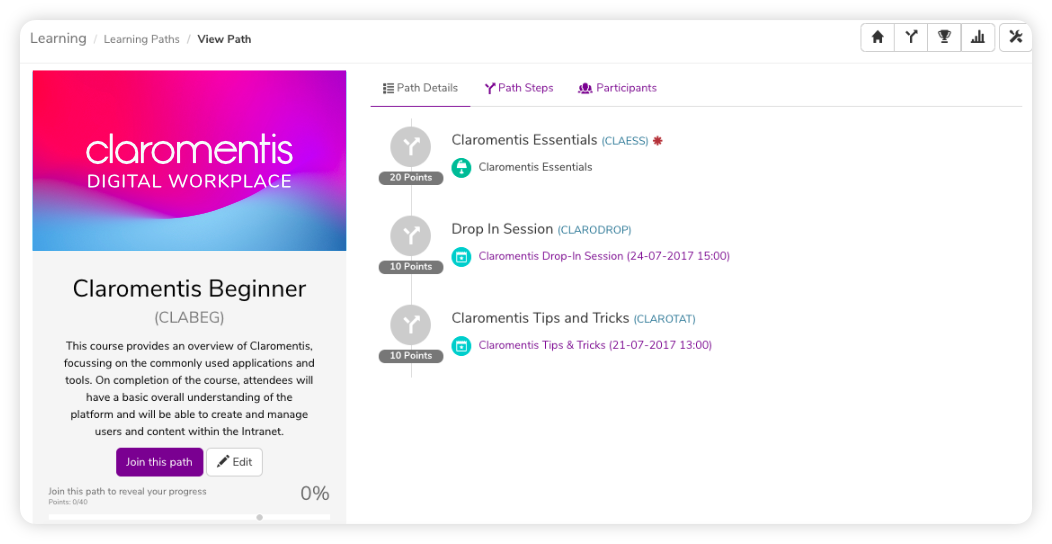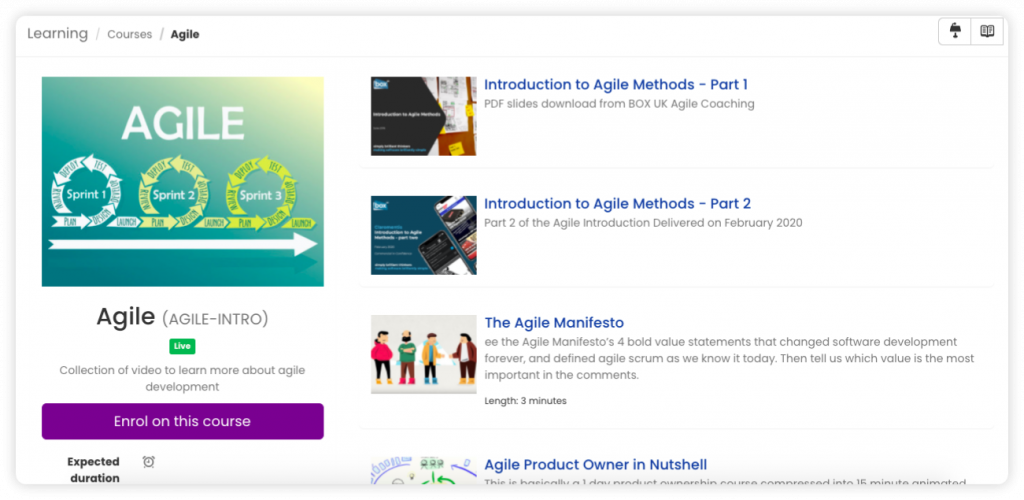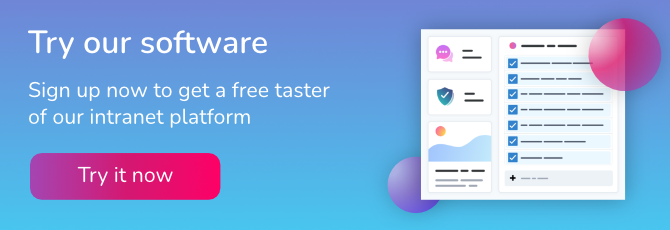Learning management systems are increasingly becoming a staple in organisations’ software toolkit, as people’s appetite for expanding their skills and knowledge continues to grow.
Indeed, a report by LinkedIn Learning found that 57% of L&D professionals spend more time managing online learning programs than they did three years ago, whilst time on instructor-led training has decreased over the same period.
So what’s all the fuss about, and how can you make learning management work in your own organisation? We explain all and share some inspiring examples below:
What are examples of learning management systems?
First of all, you may hear learning management systems being referred to as different things – such as learning management platforms, e-learning software, and SaaS LMS to name a few. In reality, these are just different names that describe the same system.
In a nutshell, learning management systems provide teams with centralised, online learning programs that expand their knowledge and skills. It’s a digitised learning experience that’s accessible to all teams, and covers all areas of corporate training from health & safety and compliance to employee onboarding and leadership.
LMS examples include online courses, interactive training content like webinars and quizzes, as well as reporting tools to help managers or mentors monitor their team’s learning progress.
A modern LMS platform offers customisation too, allowing course leaders to create a variety of user-friendly course materials that suit different learning styles. Team members can also create their own personalised learning paths, which display real time updates on course progress.

That said, creating courses and simply expecting staff to absorb the information is misguided. You need to ensure that the course content keeps your teams’ attention, and this is where gamification comes in.
Incorporating elements of gamification into your learning program – such as instant feedback and the promise of earning points or badges – will help keep engagement levels high. It plays an important role in how to train employees, because behavioural research shows that these techniques captivate learners’ attention and motivate them to progress.
Learning management system examples to inspire your own personal development program
So how can you get the most out of LMS software in your own organisation? We share a few learning management system options for you below to inspire your own training program:
Employee onboarding
First impressions are really important when introducing new hires into your company. Provide a lacklustre induction experience that’s all paperwork and no fun, and you risk putting off your new staff. In fact, a report found that 28% of staff are willing to quit their job in their first 90 days, often due to poor and generic onboarding.
Therefore, it’s essential that you bring your onboarding program to life – and learning management software can help you achieve this. It allows you to create a personalised learning path that’s tailored to your new hire’s individual needs.
When creating your employee’s onboarding program, include all the training content and information your newbies need to feel embedded into your organisation from day one, such as:
- Company values and mission.
- A brief history about the company and its founding members.
- A summary of who’s who and in which department – and how to contact them.
- Details about your organisation’s products and services.
- A list of common business processes and how to follow them – such requesting leave or ordering stationery.
- Compulsory training courses, like workplace safety and fire drills.
- Role-specific training that’s essential for the new hire to be able to do their job.

Provide your new hires with training that will help them do their job
Transforming your onboarding program from an uninspiring paper-based process into an interactive experience will make your new recruit’s first week much more exciting – and put them on good footing for the rest of their time with the company.
Introduction to new software
One of the main reasons why new software installations fail is due to poor support and training, or delivering the training in the wrong way.
Avoid the same fate by utilising learning management software to train up your staff on new systems.
Include different training content to cater to different learning styles – some people absorb information better via videos, whilst some prefer detailed FAQs – so that everyone has the opportunity to learn in a way that suits them.
Consider splitting your software training courses into sections as well, such as “Beginner”, “Advanced”, and “Expert”. Providing bite-size chunks of learning will make it easier for staff to digest, and the gamification elements of moving up to the next level will motivate learners to progress.
New policies
Introducing change into your organisation is never straightforward, and you may even meet some resistance.
New policies can be particularly prone to backlash, especially if they are adopted company-wide.
Confusion and lack of knowledge are two of the biggest reasons why people fear change, and this can easily be remedied – or even avoided – by giving staff ample opportunity to learn about what’s changing.
Use your LMS system to create a comprehensive training course about any new policy you introduce, and tailor each course for every department. Include details about why the policy is being implemented, how it will affect the department, and a walkthrough of any new processes that need to be followed.
By being completely transparent about new policies and encouraging staff to learn about the new developments, you can help mitigate any issues and help staff feel in-the-loop with company changes.






